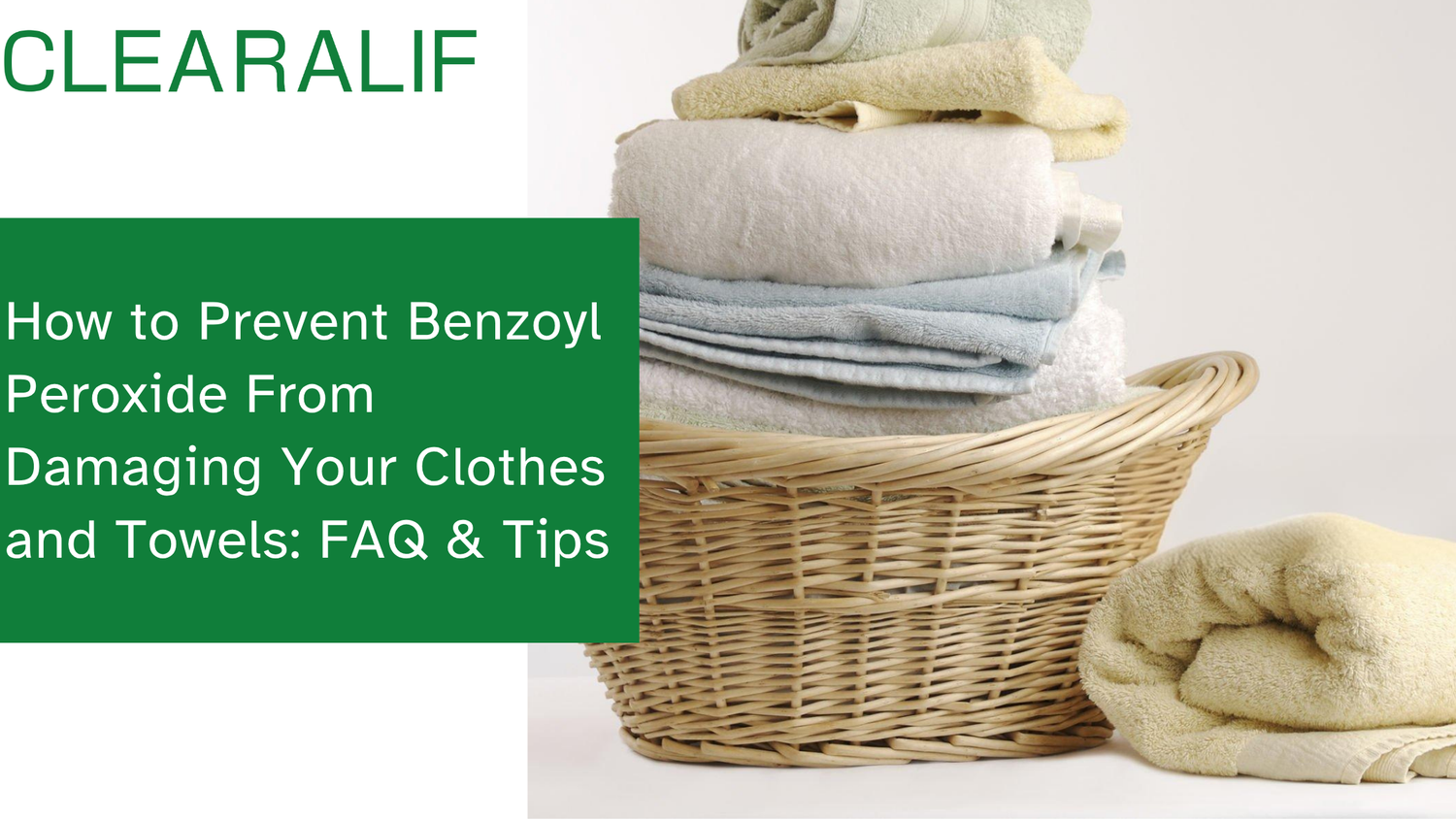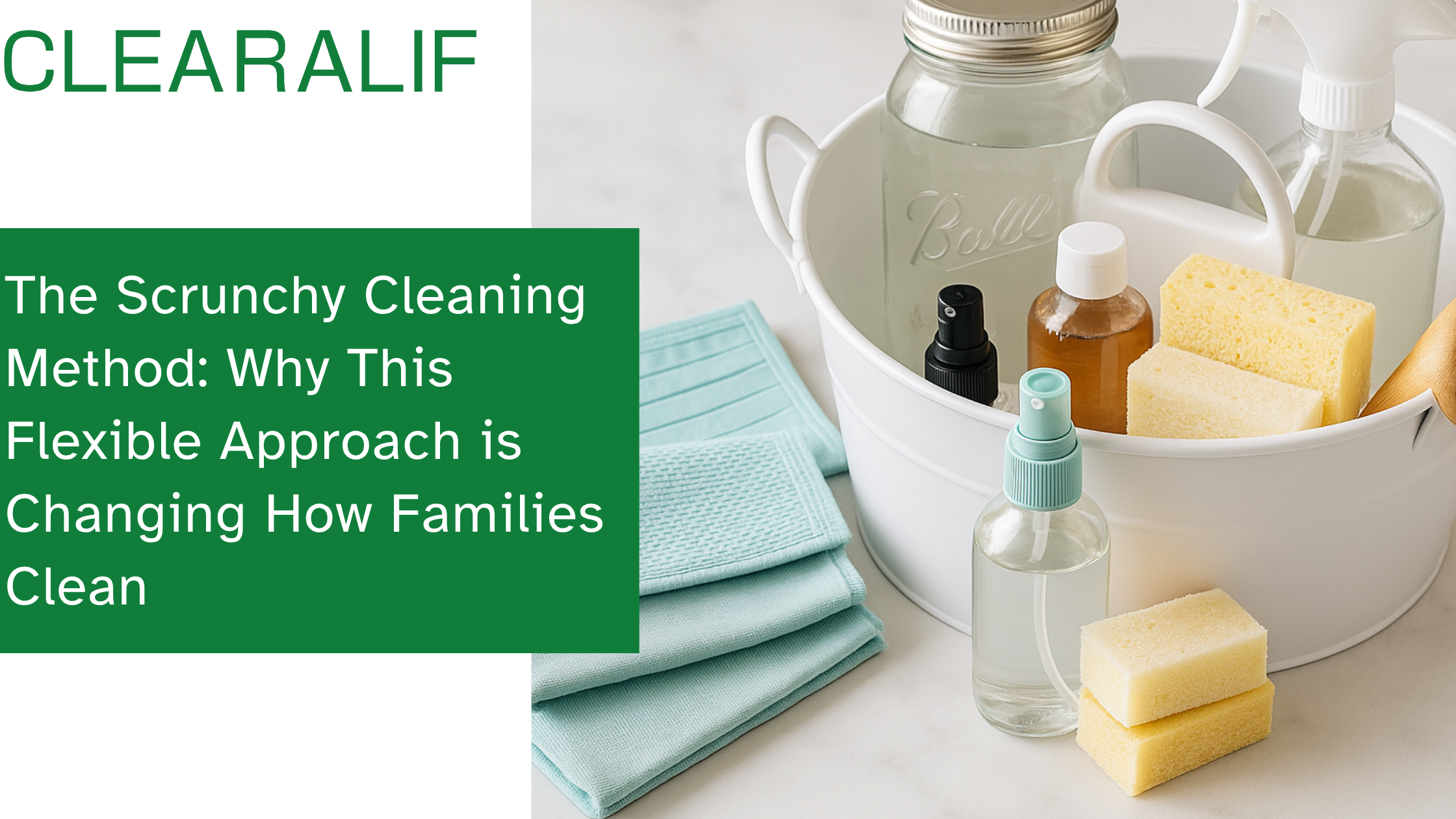This article was inspired by a question from a Reddit user:
“Best way to avoid ruining the rest of my laundry with benzoyl peroxide?
I just started using a body wash with benzoyl peroxide. I’m using white washcloths and washing them with whites. But I also have cream or white clothes with light florals, and a white bathrobe with black line drawings. Is there a way to pre-treat the washcloths so they don’t mess up the rest of the load? I heard vinegar might help — but is that true?”
If you’ve ever used a benzoyl peroxide (BP) acne treatment, you may have noticed the same frustrating problem: mysterious white spots or faded patches on your clothes and towels. BP is effective on skin, but it’s tough on fabric.
Here are answers to common questions about why BP damages laundry and how you can minimize the risk.
What does benzoyl peroxide do to fabric?
Benzoyl peroxide is a strong oxidizing agent. According to Mayo Clinic, it treats acne by killing bacteria and reducing inflammation — but it also reacts with fabric dyes and pigments, leaving bleached or faded areas. This damage is usually permanent.

Does BP only affect dark fabrics?
No — while the effect is more noticeable on dark fabrics, light-colored and even white fabrics can still develop uneven fading or dull patches. Printed and patterned fabrics can also lose their vibrancy when exposed to BP, because the multiple types of dyes and thinner application in some areas of the print can react unevenly to oxidation, resulting in patchy discoloration.
How can I prevent BP from staining my laundry?
The best way to minimize damage is to adopt a few smart habits:
- Let it dry. Wait until BP has fully absorbed or dried on your skin before putting on clothes or lying on bedding.
- Use white linens. Keep a set of white towels, pillowcases, and robes specifically for BP use.
- Separate laundry. Wash BP-exposed fabrics separately from colored and patterned items.
- Wash promptly. Rinse or wash BP-exposed fabrics as soon as possible, using cold water to reduce further damage.

- Choose gentle products. Avoid harsh detergents or chlorine bleach, which can weaken fabrics even more. A mild, chlorine-free detergent — like CLEARALIF Laundry Detergent Sheets — is a safer choice for whites and light-colored fabrics.
Does vinegar help neutralize BP?
You may have read that soaking BP-exposed fabrics in a vinegar solution can neutralize the chemical. While vinegar (a mild acid) may help reduce oxidation slightly, it does not restore lost color. Once BP has bleached the fabric, the color cannot be reversed.
What if the fabric is already bleached?
Unfortunately, bleaching from BP is permanent. You can try covering small spots with fabric dye or simply repurpose the garment for at-home use or as a “BP-safe” item.
Additional Tips
✅ Wash whites, lights, and darks separately.
✅ Use cold water and avoid high heat drying, which can set damage.
✅ Avoid chlorine bleach, which can make fabrics more fragile. Non-chlorine bleach options are also more environmentally friendly, as highlighted by the EPA.
For more information about why non-chlorine bleach is safer for fabrics, check out our related article:
👉 Non-Chlorine Bleach vs. Chlorine Bleach: Which One Is Better for Your Clothes?
Conclusion
Benzoyl peroxide is great for your skin — but it can be hard on your clothes. By following these tips and being mindful of how you care for your laundry, you can help protect your fabrics from further damage.
For more laundry care tips, visit our CLEARALIF Blog.







Leave a comment
This site is protected by hCaptcha and the hCaptcha Privacy Policy and Terms of Service apply.